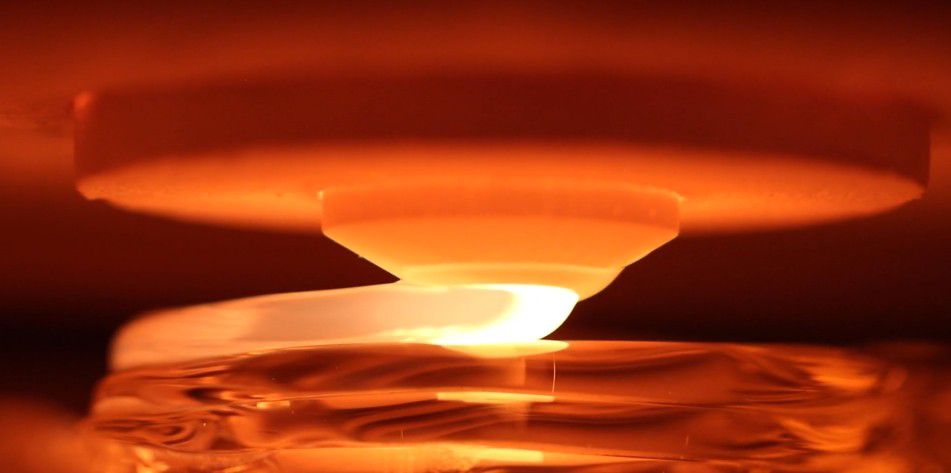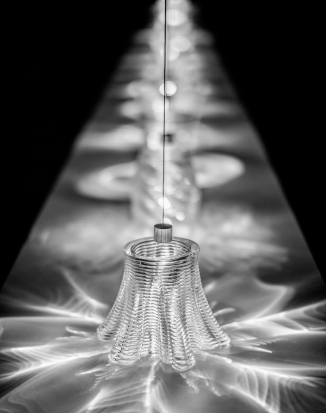Print glass in 3D? Yes, she can!
Published 15 September 2015 by Caroline Grellier
Glass is reinventing itself thanks to the latest discovery of the MIT Media Lab, the G3DP 3D printer. Glass has been moulded, shaped, blown, sintered, laminated, it is now printed in 3D and remains perfectly transparent.
When the Media Lab, the Glass Lab and the mechanical engineering department of MIT (Massachusetts Institute of Technology) gathered round a table, it was not to play cards but to create the very first 3D printer for glass, no less. The fruit of their collaboration is the G3DP (Glass 3D printing), a machine comprising a double chamber: at the top, an oven to heat the raw material to its fusion temperature (1,037°C) so that the magma plunges into the aluminium nozzle and comes out in the shape of a filament with a diameter of 1cm maximum. At the bottom, layers are superimposed with great precision, clustered and crystallised during baking.

The G3DP, developed by the researchers gathered together in the MIT Mediated Matter program, headed by the Israeli Neri Oxam, has the particularity of producing perfectly transparent glass with very good mechanical features. A real first announced this summer that opens new possibilities for all creators.
Yet, the G3DP remains for the time being a proof of concept on a limited experimental scale: it produces small rather decorative objects that do not need to test their qualities in their uses. Collectors of vases printed in 3D in all possible and imaginable materials, take note… The MIT is announcing that an exhibition in 2016 in an American design museum, the Cooper Hewitt Smithsonian, will present some of the models created by the Mediated Matter group.

For the moment, no project where the tool would become technically beneficial has seen the light of day. However, the ambition displayed by the research team is heading towards the production of architectural elements in order to exploit the possibilities of breathtaking shapes and unprecedented textures of 3D printing with glass. And as much inside as outside the volume since the shape can be perfectly mastered and freed from technical constraints linked to its implementation process.
Who knows if the G3DP does not show the signs of the younger sister of the Float process? Developed by Sir Alastair Pilkington in 1959, the Float process had revolutionised the world industry of glass to the delight of the architects of the time, thanks to his technique allowing him to produce resistant glass panels with record thinness and of remarkable flatness.
Enough with words, rather watch the spectacle (MIT video):
Learn more about 3D printing of molten glass on the dedicated MIT website
